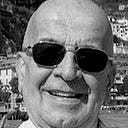February 17, 1600: Bruno the brave. Bruno il coraggioso, al rogo
February 17, 1600, in Rome, Bruno the brave, was burnt at stake for his thoughts. I never get tired of reading and writing about this great and mysterious friar, born in Nola, not far from the town where I live in the ancient Sarrasti Valley, next to Pompei. Of modest origins, forced to become a friar, this little man had a great destiny, for better or for worse, in glory and in defeat. How this was possible, it remains to be understood in various respects, despite the attempts made. It is not surprising: the individual, any individual, even Bruno, is basically ineffable.
Go to Campo dei Fiori in Rome on 17 February and you will find yourself surrounded by a motley crowd of atheists, pantheists, anarchists, Masons, mystics, Christian reformers and members of the Italian Association of Free Thinkers, all rubbing shoulders with an official delegation from City Hall. Every year, this unlikely congregation gathers to lay wreaths at the foot of the 19th-century statue that glowers over the piazza from beneath its friar’s cowl; flowers, candles, poems and tributes pile up against the plinth whose inscription reads:
‘To Bruno, from the generation he foresaw, here, where the pyre burned.’
In the four centuries since he was executed for heresy by the Roman Inquisition, this diminutive iconoclast has been appropriated as a symbol by all manner of causes, reflecting the complexities and contradictions inherent in his ideas, his writings and his character.
The “crazy Nolano” is a character who continues to fascinate not so much and not only for his writings, still very difficult to understand, but also for his mysterious life. It is no coincidence that writers such as James Joyce, Oscar Wilde, Bertold Brecht and many others have written about him in their books. Victor Hugo promoted a fundraiser in France for the erection of the monument in Piazza dei Fiori. What particularly attracts about Giordano Bruno is his complex figure as a man and a friar, two conditions at times conflicting, at other times converging. Two identities that have given life to writings that are still the subject of studies and discussions today.
His continuous conflict with authority arose from a problematic relationship within his distinct identities as a man and a friar. He seems, however, to remain a stranger both to himself and to his community, a continuous conflict between human and divine, earthly and transcendent, past, present and future. His successor, Galileo, unlike him, was able to retract his ideas and was officially pardoned for his revolutionary ideas.
Bruno, on the other hand, had gone too far, deviating from Christian doctrine and for this reason continues to be outside the traditional schemes to which every philosophy based on a faith must refer. The clash and conflict with those who make the intellect the instrument of knowledge are inevitable, against all limits and inquisitions.
@@@@@@@@@@@@@@@@@@@@@@@@@@@@@@@@@@
Il 17 febbraio 1600, a Roma, Bruno il valoroso, fu arso al rogo per i suoi pensieri. Non mi stanco mai di leggere e scrivere di questo grande e misterioso frate, nato a Nola, non lontano dal paese in cui vivo nell’antica Valle dei Sarrasti, vicino Pompei. Di origini modeste, costretto a farsi frate, questo piccolo uomo ebbe un grande destino, nel bene e nel male, nella gloria e nella sconfitta. Come ciò sia stato possibile, resta da capire sotto vari aspetti, nonostante i tentativi fatti. Non sorprende: l’individuo, qualsiasi individuo, anche Bruno, è fondamentalmente ineffabile.
Andate a Campo dei Fiori a Roma il 17 febbraio e sarete circondati da una folla eterogenea di atei, panteisti, anarchici, massoni, mistici, riformatori cristiani e membri dell’Associazione Italiana Liberi Pensatori, tutti a contatto con una delegazione ufficiale dal Municipio. Ogni anno, questa improbabile congregazione si riunisce per deporre corone ai piedi della statua del XIX secolo che brilla sulla piazza, sotto il cappuccio del frate. Fiori, candele, poesie e omaggi si accumulano contro il piedistallo la cui iscrizione recita:
“A Bruno, dalla generazione che ha previsto, qui, dove bruciava la pira.”
Dopo più di quattro secoli, da quando fu giustiziato per eresia dall’Inquisizione romana, questo minuscolo iconoclasta è diventato il simbolo per ogni sorta di cause, riflettendo le complessità e le contraddizioni inerenti alle sue idee, ai suoi scritti e al suo carattere.
Il “pazzo Nolano” è un personaggio che continua ad affascinare non tanto e non solo per i suoi scritti, ancora molto difficili da capire, ma anche per la sua vita misteriosa. Non è un caso che scrittori come James Joyce, Oscar Wilde, Bertold Brecht e molti altri abbiano scritto di lui nei loro libri.
Victor Hugo promosse una raccolta fondi in Francia per l’erezione del monumento in Piazza dei Fiori. Ciò che particolarmente attrae di Giordano Bruno è la sua complessa figura di uomo e di frate, due condizioni a volte contrastanti, ora convergenti. Due identità che hanno dato vita a scritti che ancora oggi sono oggetto di studi e discussioni.
Il suo continuo conflitto con l’autorità nasceva da un rapporto problematico all’interno delle sue distinte identità di uomo e di frate. Sembra, tuttavia, rimanere un estraneo sia a se stesso che alla sua comunità, un conflitto continuo tra umano e divino, terreno e trascendente, passato, presente e futuro. Il suo successore, Galileo, a differenza di lui, seppe ritrattare le sue idee e fu ufficialmente graziato per le sue idee rivoluzionarie.
Bruno, invece, si era spinto troppo oltre, deviando dalla dottrina cristiana e per questo continua ad essere al di fuori degli schemi tradizionali a cui deve fare riferimento ogni filosofia basata su una fede. Lo scontro e il conflitto con coloro che fanno dell’intelletto lo strumento della conoscenza sono inevitabili, contro ogni limite e ogni inquisizione.
